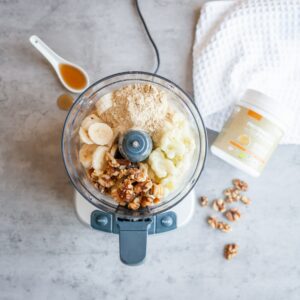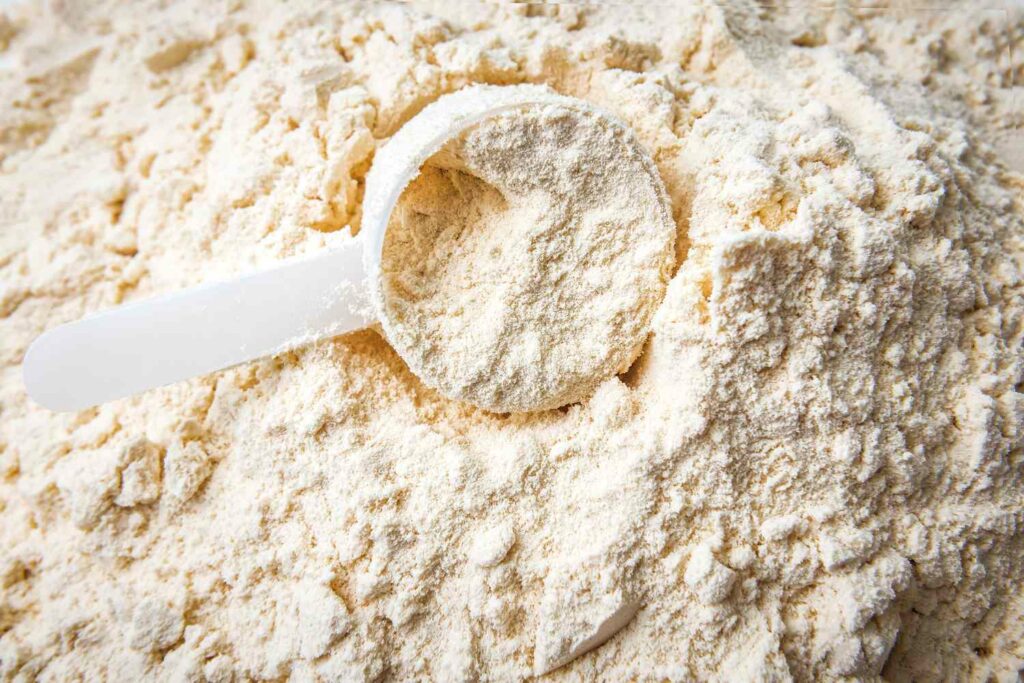Exploring Whey Protein


This ingredient has gained immense popularity in recent years due to its nutritional value and versatile applications in the industry. Its nutritional value and versatile applications in the food industry have driven its immense popularity in recent years. Food manufacturers consider it an essential ingredient as it can be utilized in various roles. We will explore the diverse applications including being a texture enhancer, and a thickening, gelling agent, surface-active, and foaming agent.
Whey Protein's Applications as a Texturizer
Whey protein improves the texture of various food products, playing a crucial role in enhancing food quality. For example, it is used to create a soft and chewy texture in protein bars. In baked goods like muffins and pancakes, whey protein achieves a moist and tender crumb texture, enhancing the overall mouthfeel.
The exceptional thickening properties make it suitable for a wide range of food, from soups and sauces to dairy-based desserts. When heated, whey protein denatures and forms a gel-like structure, effectively thickening the liquid. This makes it an ideal choice for improving the viscosity of sauces and gravies while maintaining a smooth, creamy texture.
The Perfect Stabilizing Ingredient
As a gelling agent, this ingredient solidifies and stabilizes certain food products, enhancing their texture. In applications like yogurt, whey protein increases the gel strength, resulting in a creamier and more appealing product. It is also used in the production of protein-fortified gels and puddings, providing a consistent and pleasant mouthfeel.
The emulsifying and surface-active properties make it a valuable ingredient in creating emulsions and salad dressings. It stabilizes the interface between oil and water, preventing separation and ensuring a homogeneous mixture. This is particularly beneficial in products like mayonnaise and salad dressings, where maintaining a smooth and stable emulsion is essential.
Known for its ability to create stable foams, whey protein is a key ingredient in various aerated food products. In the production of baked goods like cakes and muffins, whey protein improves the volume and texture of the product. Moreover, it plays a crucial role in creating foam toppings for beverages like lattes and cappuccinos, adding a luxurious element.
Utility in Nutritional Value
Aside from its functional properties, whey protein offers numerous nutritional benefits. It is a complete protein, containing all essential amino acids, making it an excellent choice for those seeking to increase their protein intake. Whey protein is easily digestible and rapidly absorbed by the body, making it a popular choice among athletes and fitness enthusiasts for muscle recovery and growth.
As consumer preferences continue to evolve, the food industry must adapt to meet changing demands. The versatility allows food manufacturers to develop products that align with current trends, such as high-protein, gluten-free, and clean-label options. Whether creating plant-based meat alternatives or fortifying dairy products, whey protein can be tailored to meet specific consumer needs.

Beyond the Ingredient
In conclusion, whey protein is more than just a nutritional supplement; it is a multifunctional ingredient that plays a crucial role in the food industry. Its applications as a texture enhancer, thickening agent, gelling agent, surface-active agent, and foaming agent make it indispensable in food formulation and production. Beyond its functional properties, whey protein offers nutritional benefits and the flexibility to meet consumer demands for innovative and health-conscious food products. As the food industry continues to evolve, whey protein remains a valuable tool for creating delicious and high-quality food products that cater to a wide range of tastes and preferences.
